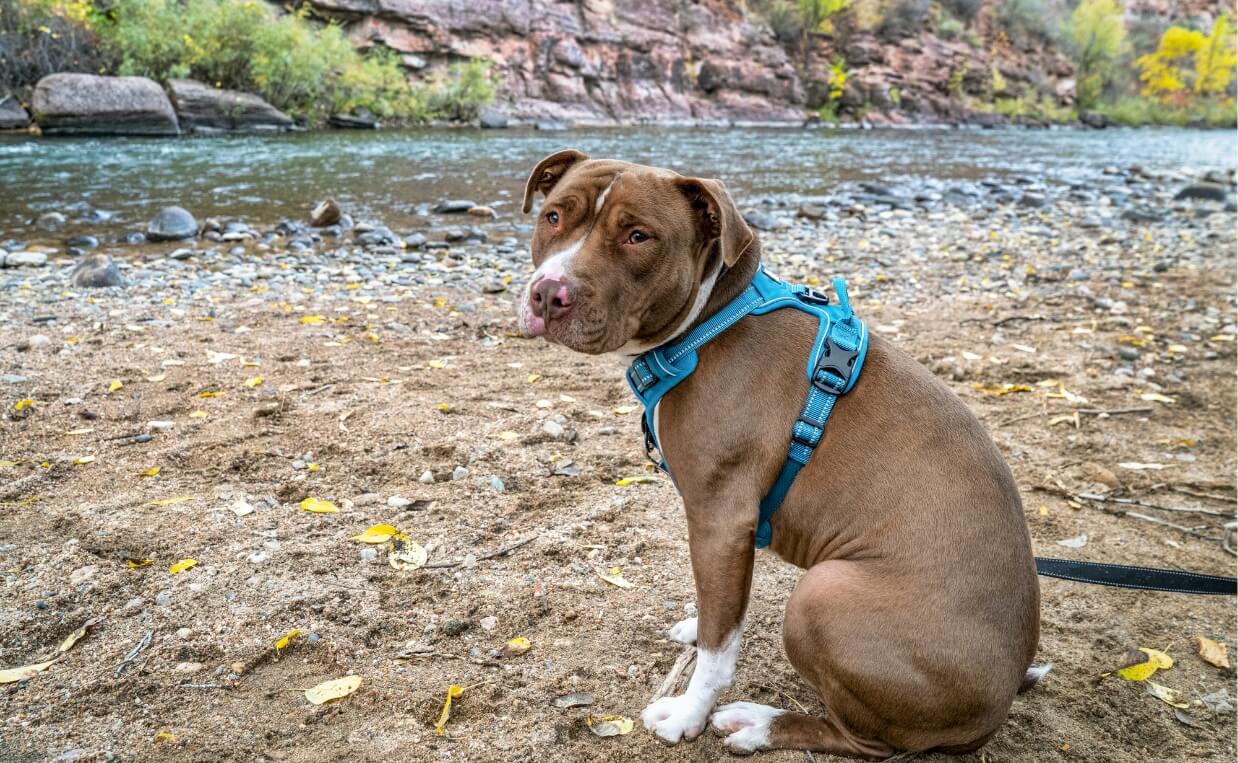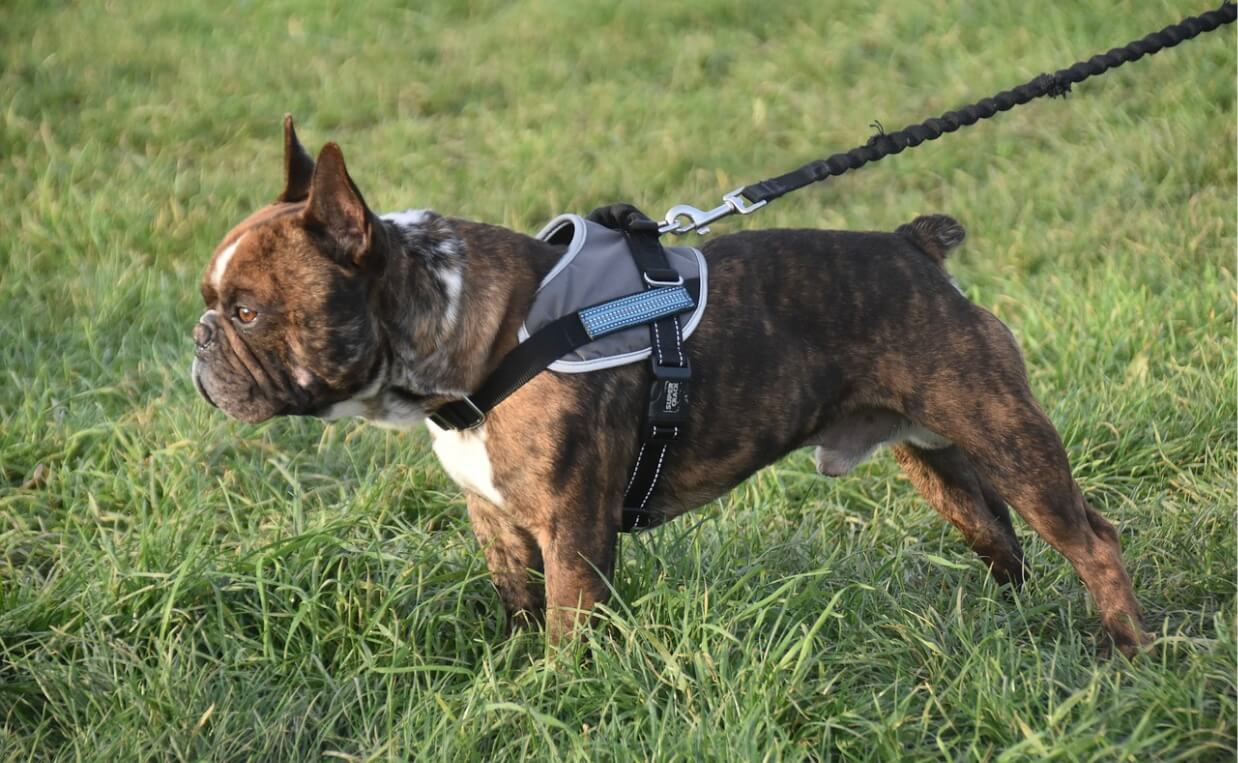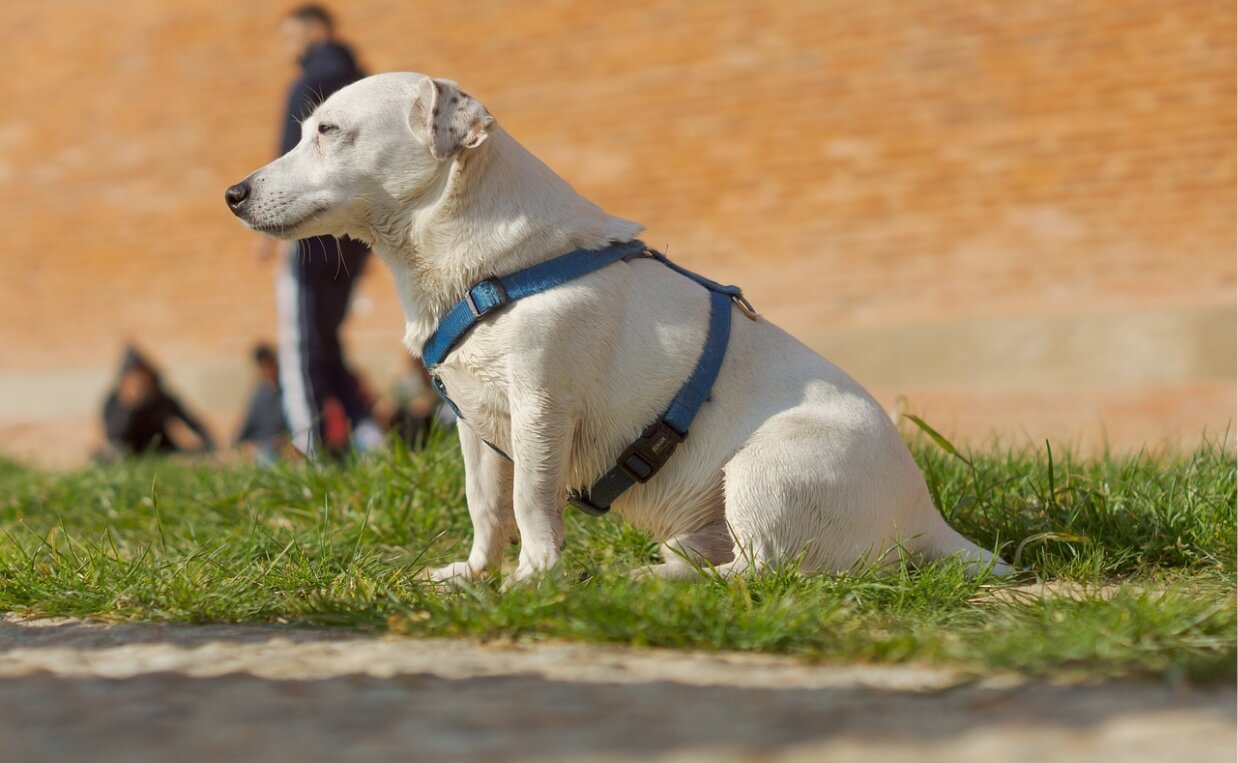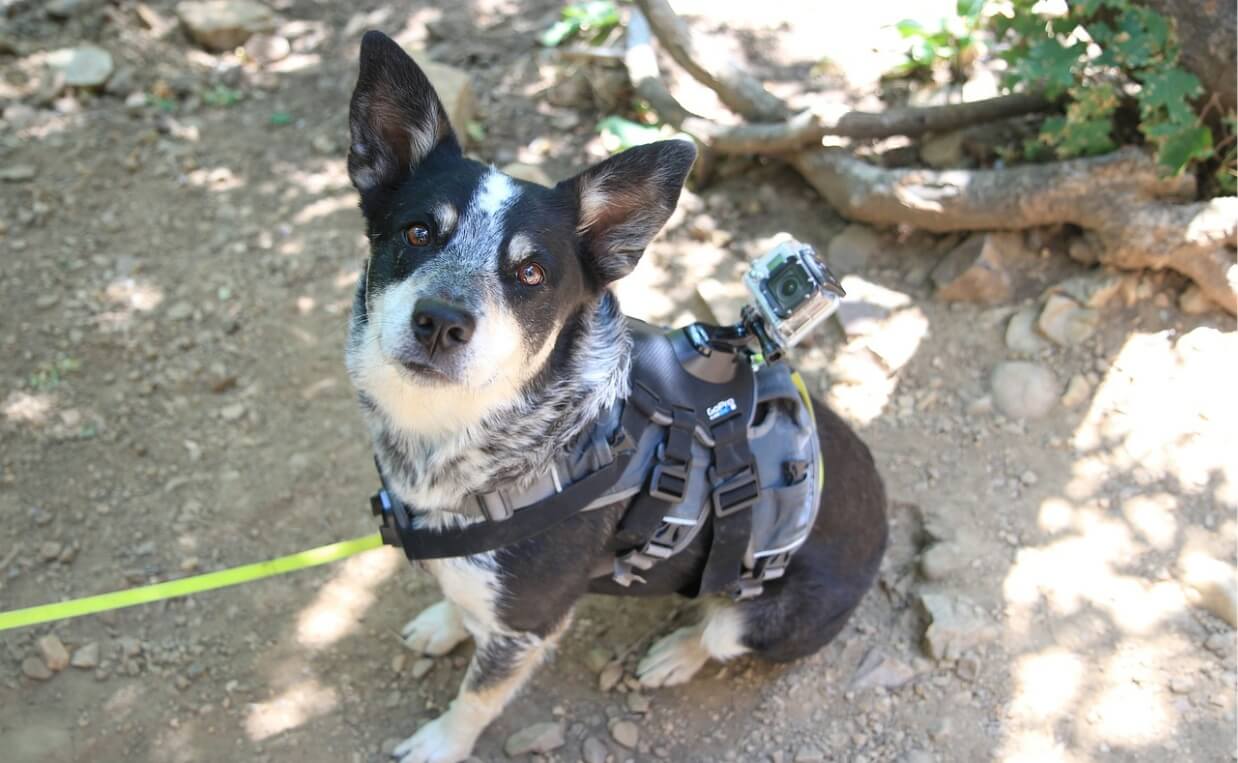
A dog harness is an important tool for dog parents who want to keep their furry family members safe and comfortable during walks, hikes, or other outdoor activities. With so many different harness options on the market, it can be overwhelming to choose the right harness for your dog.
Benefits of a Dog Harness
A dog harness offers many benefits for both dogs and dog parents. Here are some of the most significant benefits of using a harness for your dog.
-
Increased control
A harness provides more control over your dog’s movements, making it easier to manage your dog’s behavior and keep them safe during walks or other outdoor activities.
-
Reduced pulling
A well-fitted harness can help reduce pulling and make it easier to train your dog to walk on a leash without pulling.
-
Prevents choking and neck injuries
A harness distributes pressure evenly across your dog’s chest and back, reducing the risk of choking or neck injuries.
-
Prevents escape
A properly fitted harness reduces the risk of your dog escaping from their collar or leash, which can be dangerous if they run into traffic or other hazards.
-
Comfortable for your dog
A harness is often more comfortable for your dog than a collar, especially for breeds with a delicate neck, such as toy breeds or brachycephalic (short-nosed) breeds.
-
Better for dogs with respiratory problems
Harnesses are also beneficial for dogs with respiratory problems, as they reduce pressure on the trachea and make it easier for them to breathe.
-
Helps with mobility
For older dogs or dogs with mobility issues, a harness can provide additional support and help them move around more comfortably.

Key Factors to Consider When Selecting a Dog Harness
-
Purpose
The first thing to consider is the purpose of the harness. Different harnesses are designed for different activities, such as walking, running, hiking, or swimming. A standard walking harness will work for everyday walks, while a more durable harness may be necessary for hiking or running with your dog. A swimming harness will have different features, such as buoyancy and water-resistant material.
-
Size
It is important to measure your dog’s chest and neck before purchasing a harness. You can do this by using a tape measure or a piece of string, and then measuring the string against a ruler. The harness should fit snugly but not be too tight or too loose. If the harness is too loose, your dog may slip out of it, and if it’s too tight, it can cause discomfort and restrict breathing.
-
Material
The material of the harness is an important factor to consider. Most harnesses are made out of nylon or leather. Nylon is lightweight and durable, while leather is sturdy and long-lasting. Some harnesses are also made out of neoprene, which is water-resistant and great for swimming. Whichever material you choose, make sure it is comfortable for your dog and does not irritate their skin.
-
Style
Harnesses come in different styles, such as front-clip, back-clip or dual-clip. Choose a style that suits your dog’s walking habits and personality.
-
Feature
Consider any additional features important for you and your dog. Some harnesses have padded straps for extra comfort, reflective stitching or material for visibility during low-light conditions, or handle for easy lifting and control. Think about what features will be most beneficial for you and your dog’s needs.

Types of Dog Harnesses
There are several types of dog harnesses available on the market, each with its own unique design and function. Here are some of the most common types of dog harnesses:
-
Back-clip harness
This is the most common type of dog harness, and it features a D-ring on the back of the harness for leash attachment.
-
Front-clip harness
This type of harness has a D-ring on the front of the harness, which attaches to the leash. It helps to prevent pulling by redirecting the dog’s attention towards the owner.
-
Dual clip harness
This harness has both front and back D-rings for leash attachment, providing the owner with more control and flexibility when walking their dog.
-
No-pull harness
As the name suggest, this harness is designed to prevent dogs from pulling during walks. It typically features a front D-ring for leash attachment and a design that puts pressure on the dog’s chest when they pull.
-
Step-in harness
This type of harness is designed to be easy to put on and take off. The dog simply steps into the harness and the owner fastens it around the dog’s body.
-
Vest harness
This harness has a padded vest that wraps around the dog’s chest and back for added comfort and support.
-
Car harness
This harness is specifically designed for use in the car and features a seatbelt attachment that secures the dog to the car seat, providing safety during travel.
-
Swim harness
This is a more lightweight and restrictive harness for your dog. A dog swim harness can make it easier to grab your dog when necessary. Be careful to make sure the pads don’t get heavy or loose when they get wet. Some dog harnesses already double as a life jacket, which is better than using a separate harness and life vest.

How to Fit Your Dog to a Dog Harness
Fitting a dog harness properly is essential to ensure your dog’s comfort and safety during walks and outdoor activities. Here are some steps to follow when fitting your dog for a harness:
-
Measure your dog’s girth
Use a soft measuring tape to measure the widest part of your dog’s ribcage, usually just behind the front legs. Record the measurement in inches or centimeters.
-
Choose the right size
Using the measurement you just took, check the size chart of the harness brand you are interested in. Make sure to choose a size that matches your dog’s girth measurement.
-
Adjust the harness straps
Once you have chosen the right size, adjust the straps on the harness so they fit snugly but not too tight. You should be able to fit two fingers between the harness and your dog’s body.

-
Check the fit
Once you have adjusted the harness straps, check the fit by running your fingers along the harness to ensure there are no areas that are too tight or too loose. Also, make sure the harness is not rubbing against your dog’s skin or restricting their movement.
-
Check for escape routes
Make sure there are no gaps between the harness and your dog’s body that your dog can slip out of. This is particularly important for dogs who are escape artists.
-
Attach the leash
Once the harness is properly fitted, attach the leash to the designated attachment point. Depending on the style of the harness, this may be on the back or front of the harness.
-
Observe your dog’s behavior
Observe your dog’s behavior as you walk them with the harness. Make sure they are comfortable and not experiencing any discomfort, such as chafing or difficulty breathing.
In conclusion, choosing the right harness for your dog requires careful consideration of your dog’s size, activity level, and personality. A dog harness can improve your dog’s comfort, safety, and overall quality of life. Whether you’re taking your dog for a walk, hike, or any other outdoor activity, a well-fitted harness can provide peace of mind and make the experience more enjoyable for both you and your furry family member.
What type of harness (or harnesses) have you chosen for your dog? Please share what you like – or don’t like – about your dog’s harness to help other dog lovers in our community. Thanks for your input!

 15 Custom Dog Portrait Gifts You Need to Order Soon to Have in Time for Christmas
15 Custom Dog Portrait Gifts You Need to Order Soon to Have in Time for Christmas Chew-Proof Dog Beds: Are They Real or Just a Myth?
Chew-Proof Dog Beds: Are They Real or Just a Myth? Top 6 Best Slow Feeder Dog Bowls
Top 6 Best Slow Feeder Dog Bowls New Puppy Checklist: Supplies You Need When Bringing a Puppy Home
New Puppy Checklist: Supplies You Need When Bringing a Puppy Home 24 Delightful Gifts for the Dog Lovers in Your Life
24 Delightful Gifts for the Dog Lovers in Your Life






Leave a Reply